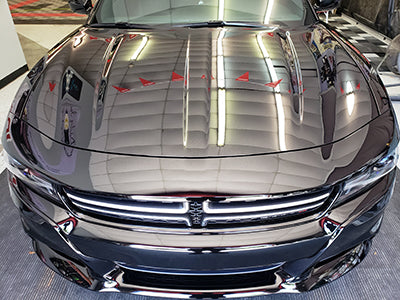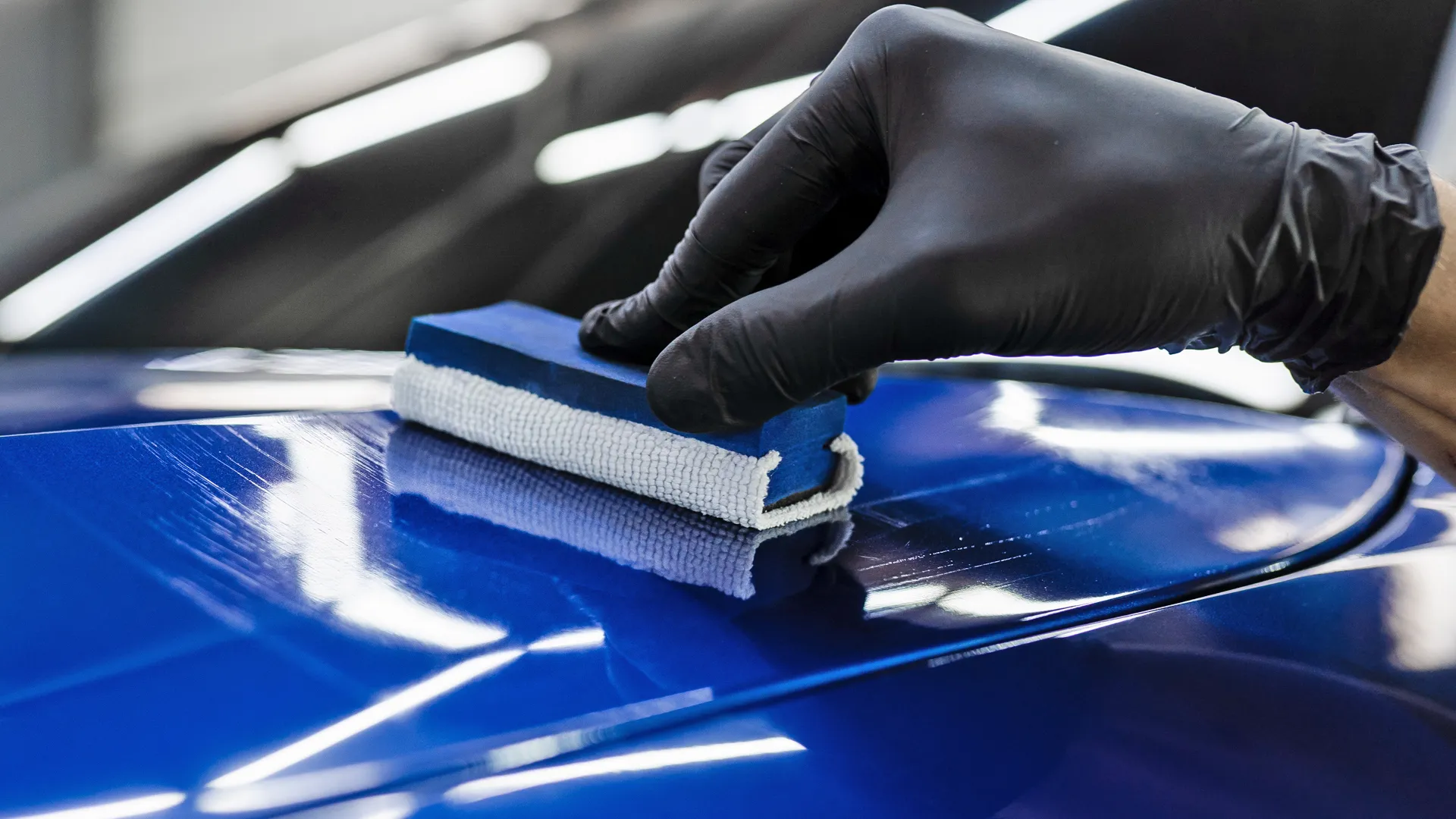Ceramic Coating vs Traditional Wax: Which Offers Better Protection?
Ceramic Coating vs Traditional Wax: Which Offers Better Protection?
Blog Article
Ceramic Finishing vs. Standard Wax: Which Provides Better Long-Term Protection?
The debate in between ceramic layers and typical wax for vehicle protection has gathered considerable focus amongst vehicle lovers and experts alike. While both satisfy of securing paint, their differences in resilience, application, and lasting maintenance prices may affect a consumer's option. Ceramic coverings boast premium longevity and resistance to ecological elements, yet the complexity of their application questions about access and usefulness. As we explore these contrasting alternatives, it comes to be necessary to take into consideration not just the instant benefits however additionally the ramifications for lorry care over time.
Overview of Ceramic Finishing
Ceramic finishing has obtained considerable appeal among vehicle fanatics and detailers alike as a result of its advanced protective qualities. This ingenious modern technology is created to create a long lasting, hydrophobic guard over a vehicle's paint surface area, significantly improving its resistance to ecological impurities such as dust, UV rays, and chemical spots. Unlike conventional wax, which gives a short-term layer of defense, ceramic finishings bond at a molecular level with the paint, using long-lasting toughness-- frequently expanding beyond 2 years with proper maintenance.
The application procedure entails thorough prep work of the lorry's surface area, consisting of cleansing and brightening to ensure optimum bond. As soon as used, the coating treatments to form a robust layer that not only includes deepness and gloss to the paint but additionally streamlines maintenance. With its hydrophobic properties, ceramic coating allows water and dirt to glide off even more quickly, reducing the regularity of cleans and minimizing the risk of swirl marks.
Moreover, ceramic coatings are available in numerous solutions, permitting users to choose products customized to their details demands and choices. On the whole, ceramic coating represents a significant innovation in paint defense technology, supplying premium efficiency compared to standard choices.
Review of Conventional Wax
Traditionally considered a staple in auto care, wax acts as a popular selection for those looking for an uncomplicated approach to enhance and protect their automobile's paint - ceramic coating. Automotive wax typically consists of natural ingredients, such as carnauba, or synthetic compounds, developed to develop a safety layer on the surface of the paint. This layer not just enhances the vehicle's gloss and radiate but additionally supplies a barrier against environmental impurities
The application of wax is usually straightforward, making it available for both specialists and Do it yourself fanatics. As soon as used, wax requires a treating duration, after which it hardens to form a protective covering.
However, while wax works for boosting the aesthetic appeal of a lorry, it is necessary to note that the defense it offers may necessitate more constant reapplication contrasted to different items, such as ceramic finishes. Overall, standard wax stays a favored alternative for those focusing on ease of use and immediate visual improvement.
Sturdiness and Durability Comparison
While both ceramic finishes and conventional wax offer safety benefits for automotive paint, their longevity and long life differ considerably. Traditional wax, typically made from all-natural carnauba or artificial polymers, normally gives a protective layer that lasts around three to six months. This fairly short life-span necessitates regular reapplication to preserve ideal protection.
In comparison, ceramic coverings are engineered from advanced nanotechnology, forming a covalent bond with the paint surface area. This causes a durable, hydrophobic layer that can withstand for two to five years, depending on the item and ecological problems. The superior sturdiness of ceramic finishes is credited to their chemical framework, which uses improved resistance to scratches, UV rays, and oxidation.

Security Versus Environmental Variables
Safeguarding an automobile's paint from ecological variables is essential for keeping its appearance and worth over time. Cars are continuously exposed to a range of elements, consisting Your Domain Name of UV rays, bird droppings, tree sap, acid rainfall, and roadway grime, all of which can check these guys out endanger the integrity of the paintwork.
Ceramic finishings provide a durable protection against these ecological assailants. Unlike traditional wax, which can weaken quickly under UV exposure, ceramic finishings develop a resilient, hydrophobic layer that resists the damaging effects of sunlight and toxic wastes. This advanced innovation produces a chemical bond with the car's surface area, providing remarkable security that lasts for many years, also in harsh conditions.
In contrast, ceramic finishings preserve their protective top qualities longer, considerably decreasing the risk of paint damages and making certain that the car maintains its aesthetic appeal. As an outcome, ceramic layers are significantly identified as the superior choice for long-lasting security against ecological aspects.
Application and Maintenance Differences
The approaches of application and succeeding maintenance for ceramic coatings and traditional wax vary substantially, affecting the overall customer experience and efficiency of each advice product. Ceramic coatings call for an even more complex application procedure, normally including surface preparation that includes washing, decontaminating, and brightening the automobile. When the surface is ready, the ceramic covering is used in a regulated environment, often needing professional proficiency to make certain proper curing and bonding to the paint.

While both products enhance car look, the longer-lasting protection used by ceramic coatings might warrant their first financial investment, despite the more demanding application process. On the other hand, typical wax continues to be a preferred choice for those looking for an easier, albeit temporary, option.

Conclusion
To conclude, ceramic finishes show significant advantages over conventional wax in regards to durability and environmental defense. With a lifespan extending 2 to 5 years and premium resistance to UV rays, dirt, and chemical spots, ceramic coverings use a much more effective option for long-lasting car upkeep. The application process might need specialist proficiency, the resulting expense financial savings and decreased frequency of reapplication highlight the value of ceramic coverings for those seeking ideal vehicle defense.
The argument between ceramic finishings and typical wax for lorry defense has actually garnered substantial attention amongst vehicle fanatics and specialists alike. Unlike standard wax, which offers a short-lived layer of protection, ceramic layers bond at a molecular level with the paint, using lasting longevity-- commonly extending past 2 years with correct upkeep.
While both ceramic layers and traditional wax deal protective benefits for auto paint, their durability and long life differ significantly. For automobile lovers looking for long-term security, ceramic finishes offer an engaging advantage over standard wax products.
In conclusion, ceramic layers demonstrate significant benefits over traditional wax in terms of sturdiness and ecological security.
Report this page